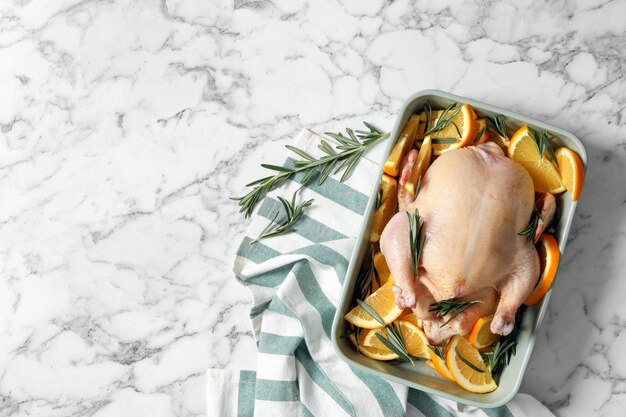How Long Does Fresh Turkey Keep in the Refrigerator? Get the Scoop on Safe Storage!
With the holiday season fast approaching, many of us find ourselves contemplating that magnificent centerpiece of our festive table: the turkey. Whether it’s Thanksgiving, Christmas, or any other special occasion, ensuring the freshness of a turkey is essential to both taste and safety. Let's dive into the details on how long fresh turkeys last in the refrigerator and explore essential tips to maximize their freshness and safety.
🦃 The Shelf Life of Fresh Turkey
Understanding Fresh Turkey Storage
The freshness of a turkey is crucial for maintaining its flavor and safety. Fresh turkeys are typically stored uncooked and are not frozen. This state requires careful handling and proper storage to prevent spoilage and reduce the risk of foodborne illnesses.
- In the Refrigerator: Generally, a fresh, raw turkey can last 1-2 days in the refrigerator. If you purchase your turkey more than this timeframe ahead of cooking, freezing it is recommended.
This relatively short shelf life is due to the bacterial growth that can occur if the turkey is left in less-than-ideal conditions.
Key Factors Influencing Freshness
Several factors can influence how long your fresh turkey remains in optimal condition:
- Packaging: Ensure that the turkey is in its original packaging or well-wrapped to prevent exposure to air, which can dry it out.
- Temperature: Your refrigerator should consistently remain at or below 40°F (4°C). A temperature higher than this can accelerate spoilage.
- Position in Refrigerator: Store the turkey on the bottom shelf or in the meat drawer, where it’s coldest and isolated from other foods to prevent cross-contamination.
🔍 Identifying Freshness: When to Keep and When to Discard
Signs of Spoilage
Even with optimal storage, it's essential to recognize signs that a turkey may no longer be fresh:
- Odor: A strong, unpleasant smell is a clear indication of spoilage.
- Texture: Slimy or sticky surfaces are red flags.
- Color: Discoloration or dull, grayish tones suggest the turkey should not be consumed.
Safety Practices
To ensure safety and quality, follow these best practices:
- Check Dates: Always check the “sell-by” and “use-by” dates when purchasing.
- First In, First Out: Use older stock in your refrigerator before anything newly purchased.
🌡️ Freezing as an Alternative
Extending Shelf Life through Freezing
If your turkey purchase occurs more than 1-2 days before cooking and you want to maintain its optimal freshness, freezing is your best option. When properly done, freezing can extend the turkey’s shelf life by several months.
- Preparation: Prior to freezing, remove any unnecessary packaging and wrap the turkey tightly in foil or plastic wrap, then place it in a heavy-duty freezer bag.
- Freezing Duration: A raw turkey can be frozen for up to a year and generally maintains quality if consumed within this period.
📋 Turkey Storage at a Glance
Here’s a handy reference to summarize the information covered:
| Storage Method | Recommended Duration | Key Points |
|---|---|---|
| Refrigerator (Fresh) | 1-2 Days | Ensure temp below 40°F, keep in original packaging |
| Freezer (Raw) | Up to 1 Year | Wrap well, store at 0°F or below |
📝 Quick Tips:
- 🗓️ Plan purchase close to cooking time.
- ❄️ Freeze if storing for more than 2 days.
- 🕵️♂️ Check for spoilage signs before use.
🕒 Time-Saving Turkey Thawing
If you’ve stored your turkey in the freezer, properly thawing it is essential before cooking. Improper thawing can lead to uneven cooking and potential health risks.
Thawing Methods
Refrigerator Thawing: This is the safest method, allowing the turkey to thaw evenly while keeping it at a safe temperature. Plan for about 24 hours of thawing for every 4-5 pounds of turkey.
Cold Water Thawing: Faster than refrigeration, immerse the turkey in its packaging in cold water. Change the water every 30 minutes, allowing 30 minutes per pound for thawing.
Microwave Thawing: Only advisable if cooking immediately after, given the variability in power and size. Consult your microwave’s manual for specific instructions.
📜 Cooking and Handling Tips
Once your turkey is thawed and ready, here are some additional cooking and handling tips to ensure the best results:
Cooking Tips
- Preheat your oven for consistent cooking.
- Use a thermometer to check doneness; turkey is safe to eat when it reaches an internal temperature of 165°F (74°C).
- Let it rest: Allow the turkey to rest for about 20 minutes after cooking to let the juices redistribute before carving.
Handling Leftovers
After the meal, properly storing leftovers is crucial to prevent food waste and ensure safety.
- Refrigerate promptly: Store leftovers within two hours of cooking.
- Use within 3-4 days: This is a safe window to consume leftover turkey.
- Consider freezing: For longevity, freezing leftovers can extend their life for several more months.
Wrapping It Up
The joy of a perfectly cooked turkey can be marred by spoilage or improper handling, which is why understanding the storage and shelf life is critical. Whether storing in the refrigerator for a short period or opting to freeze for extended freshness, these guidelines ensure maximum safety and quality.
Remember, proper planning and awareness of safety practices can make your holiday feasts as enjoyable as they are delicious! 🦃🍽️
